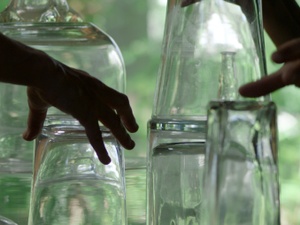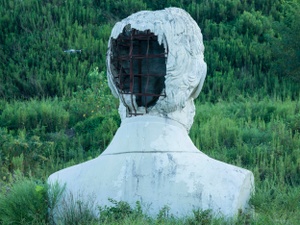FRAGILE - Volker März, Maria und Natalia Petschatnikov (Zwei Installationen zeitgenössischer Kunst)
In the organizer's words:
Who hasn't seen them, the small porcelain figurines that have become collector's items and are often used as examples of kitsch. For Maria and Natalia Petschatnikov, the soft shapes of the shiny little sculptures represent the fragile world of the past.
They discovered them in an antique store during a study trip to Denmark. The figures, whether they depict a wild polar bear, an Inuit child or an allegory of pain, are united by the beauty of the white and blue porcelain and are appealing in their belittlement. They can be read as a metaphor for an "ideal world".
Maria and Natalia Petschatnikov reverse this image by enlarging the figures and thematizing their fragility. The beauty is also broken by the installation, which uses transport crates and pallets to suggest a situation of upheaval. Porcelain is an ambivalent material: despite its stability, it also stands for fragility. It is beautiful and kitschy, valuable and cheap, special and everyday, European and global.
The two conceptual artists reveal the meaningful and multi-layered fragility of porcelain. They pose questions about the connections between the "porcelain world" and the real world. Porcelain, although a Chinese invention, is an important part of European history. Since the 18th century, every European country in every era has produced its own porcelain, and even the cruelest and most unjust regimes have produced beautiful porcelain figurines. Themes such as identity, aesthetics as a means of communication, European traditions and changing values are explored here.
Location
Artist | Other

Artist | Other

Organizer | Event Series












